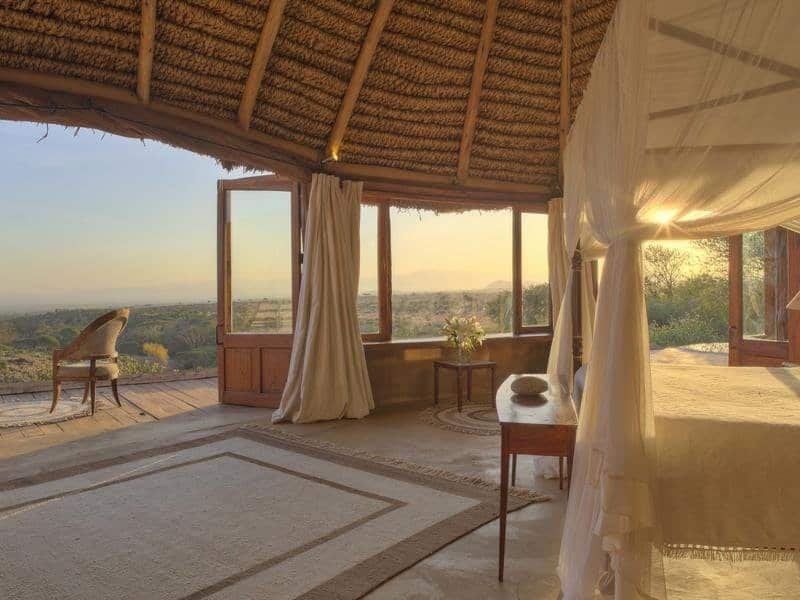In the vast and diverse landscapes of Africa, several types of protected areas and wildlife reserves exist, each offering a unique safari experience. Many terms get thrown around and it’s challenging to work out what’s what – even for experienced safari-goers. I’ll freely admit that I came relatively close to losing my mind researching this article.
Anyway, in this guide I will try to untangle the mess – but it hasn’t been easy and regional variations don’t help. Still, having some understanding of the distinctions between National Parks, Conservancies, Private Game Reserves, Private Concessions and Game Parks can be helpful when planning an unforgettable African adventure.
In essence, these are all different types of protected areas for wildlife conservation, but they differ in terms of ownership, management, and the activities allowed within them.
As mentioned, it’s important to note that the terminology and definitions may vary somewhat across different African countries, and some terms may be used interchangeably or have different connotations in different regions.
National Parks

National parks are large protected areas owned and managed by the government of a country. They are established to conserve ecosystems, wildlife, and natural/cultural resources. Examples include Serengeti National Park (Tanzania), Kruger National Park (South Africa), Etosha National Park (Namibia). They typically have strict rules, e.g., staying on designated roads, no off-road driving, no night drives, no walking safaris.
What to expect in a national park:
- Unmatched Scale: National parks encompass massive areas, boasting a mind-boggling variety of landscapes and wildlife.
- Open to All: Entry fees are generally affordable, making them accessible for a wider range of travelers.
- Structured Activities: Sticking to designated roads ensures visitor safety and minimal wildlife disturbance. Night drives and off-roading are usually not permitted.
- Crowds: National parks can get busy, especially during peak seasons.
- Accommodation Options: Lodges and campsites range from budget-friendly to high-end.
Conservancies

Conservancies are areas managed for conservation by local communities or private landowners for the purpose of sustainable conservation and tourism. Wildlife can move freely between conservancies and adjacent national parks/reserves. Examples: Masai Mara Conservancies (Kenya), Save Valley Conservancy (Zimbabwe). They offer similar activities as private reserves like night drives, walking safaris etc. and a proportion of revenue goes to local communities.
These areas often border National Parks or other protected areas and serve as buffer zones, allowing wildlife to move freely between various habitats. This is a major part of their appeal – since only vehicles attached to lodges and camps in the conservancy are allowed to traverse their area, and there are no fences, visitors can enjoy the same wildlife sightings as in the national park without the crowds.
Conservancies prioritize the involvement of local communities in conservation efforts and provide employment opportunities through eco-tourism initiatives, another very appealing factor.
What to expect in a conservancy:
- Community Focus: Many conservancies are owned and managed by local communities, fostering sustainable tourism practices and cultural immersion.
- Wildlife Corridors: Conservancies often border national parks, creating vital corridors for animal migration without fences.
- Similar Activities: Game drives are common, but night drives and off-roading may be allowed depending on the specific conservancy.
- Moderate Crowds: You’ll encounter fewer visitors compared to national parks.
- Accommodation: Options are typically mid-range to luxury lodges.
Private Game Reserves

Private game reserves are protected areas owned and managed by private individuals, companies, or organizations for wildlife conservation and tourism. These reserves are typically fenced and may reintroduce or relocate certain animal species to maintain a healthy ecosystem. Private game reserves often allow off-road driving, night drives, and walking safaris, providing guests with close-up wildlife encounters and a more personalized safari experience.
It’s a more controlled safari experience, often with high-end accommodation options. Examples of renowned Private Game Reserves in Africa include the Phinda Private Game Reserve in South Africa and the Lewa Wildlife Conservancy in Kenya.
They offer a high degree of exclusivity and luxury, with controlled access to visitors, usually only those staying at the reserve’s lodges. They tend to be a lot more expensive than national parks due to this exclusivity and the quality of services provided.
What to expect in a private game reserve:
- Exclusive Access: Private game reserves are only open to those staying in one of their lodges.
- Off-the-Beaten-Path Adventures: Expect thrilling activities like night drives, bush walks, and off-road game drives, allowing for closer wildlife encounters.
- Luxury Accommodation: High-end lodges and camps provide personalized service and top-notch amenities.
- Very Expensive: You’ll usually need deep pockets to stay in a private game reserve.
- Fences: A downside is the fact that the wildlife is contained within fences rather than roaming free, which spoils the experience if the game reserve is relatively small in size.
Private Concessions

Private concessions are areas of land leased from the government by private safari operators within or adjacent to national parks. They operate like private reserves but on public land and offer exclusive safari experiences with limited visitor numbers, ensuring a more intimate and secluded wildlife encounter. The Sabi Sands Game Reserve in South Africa and the Okavango Delta Concessions in Botswana are among the most prestigious – and expensive – private concessions in Africa.
You will almost always have the ability to engage in activities not permitted in national parks, such as off-road driving and night drives.
What to expect in a private concession:
- Exclusive Access: Concessions are leased areas within national parks, while private reserves are entirely self-contained. Both offer exclusivity with limited guest numbers.
- Off-the-Beaten-Path Adventures: Expect thrilling activities like night drives, bush walks, and off-road game drives, allowing for closer wildlife encounters.
- Luxury Experience: High-end lodges and camps provide personalized service and top-notch amenities.
- Expensive: Be prepared for a premium price tag compared to national parks and conservancies.
Game Reserves/Wildlife Reserves/Game Parks
These three terms are often used for the same thing – an area set aside for the conservation of wildlife. They can be privately owned or community-run and often offer a wider range of activities than national parks, such as bush walks, night drives, and off-road safaris. They provide a more personalized and exclusive safari experience, with limited visitor numbers and higher costs.
Just to make it even more confusing, these terms are often used interchangeably with “private game reserves” to refer to privately owned and managed areas for wildlife conservation and tourism. The key differences lie in ownership (public vs private), management (government vs private), allowed activities, visitor policies, and costs.
If that wasn’t enough, there are also areas like Moremi Game Reserve which is publicly owned and to all intents and purposes actually a national park. But there you go, I told you this wasn’t going to be easy.
Finally, some more terms you may encounter:
- Wildlife Management Areas (WMAs): These are areas designated for the sustainable utilization of wildlife resources, often in buffer zones surrounding National Parks or other protected areas. WMAs may allow activities like regulated hunting, photographic safaris, and other forms of sustainable use of natural resources.
- Community-Based Natural Resource Management Areas (CBNRM): These are conservation areas managed by local communities, often in partnership with government agencies or NGOs. CBNRM initiatives aim to promote sustainable resource use and empower local communities through revenue-sharing and employment opportunities.
- Biosphere Reserves: Designated by UNESCO’s Man and the Biosphere Program, Biosphere Reserves are areas that promote the conservation of biodiversity while also supporting sustainable economic development for local communities.
- Transfrontier Parks (Peace Parks): These are large conservation areas that span across international borders, typically involving two or more countries. Transfrontier Parks aim to facilitate the free movement of wildlife and promote regional cooperation in conservation efforts.
- Safari Areas: A general term used to describe regions or districts within a country that are known for their abundant wildlife and safari activities, but may not necessarily be designated as formal protected areas.
- Game Controlled Areas: These are areas where hunting and other activities related to wildlife management are regulated and controlled by the government or local authorities.
- Sanctuaries: This term is sometimes used interchangeably with reserve but often implies a specific focus on animal welfare and rehabilitation. Sanctuaries might place emphasis on rescuing injured or orphaned animals, or protecting particular endangered species.
- Game Farms: These are generally smaller areas with a focus on breeding or managing specific game species, sometimes even for controlled hunting purposes.
In my opinion, it’s enough to understand that National Parks are publicly-owned and open to anyone, conservancies are exclusive areas bordering national parks but with no fences, and private game reserves/concessions are generally privately-owned and more profit-focused, although part of the revenue earned will help conservation or community projects.
NB: Be very careful in South Africa – you will still find hunting operations posing as game reserves and also former farms whose owners trade wild animals commercially and basically keep them within a tiny fenced area far from their natural habitat. Anywhere else this would be called a zoo, and a crap one at that.
You won’t find all options in all destinations, and you should ALWAYS ask your travel designer for advice, but here is a quick summary…
Choosing Your Safari Adventure:
- Budget: National parks offer affordability, while private concessions and reserves cater to luxury travelers.
- Experience: National parks provide a classic safari experience with strict regulations. Conservancies and private options offer exclusivity and usually more activities.
- Community Focus: Opt for conservancies if you want to directly support local communities.
